The story of Migingo – possibly the world’s tiniest territorial dispute
Since the turn of this century, the island of Migingo – which is smaller than a football pitch – has been the focus of a dispute between Kenya and Uganda, both of which lay claim to it. Mick O’Hare explains

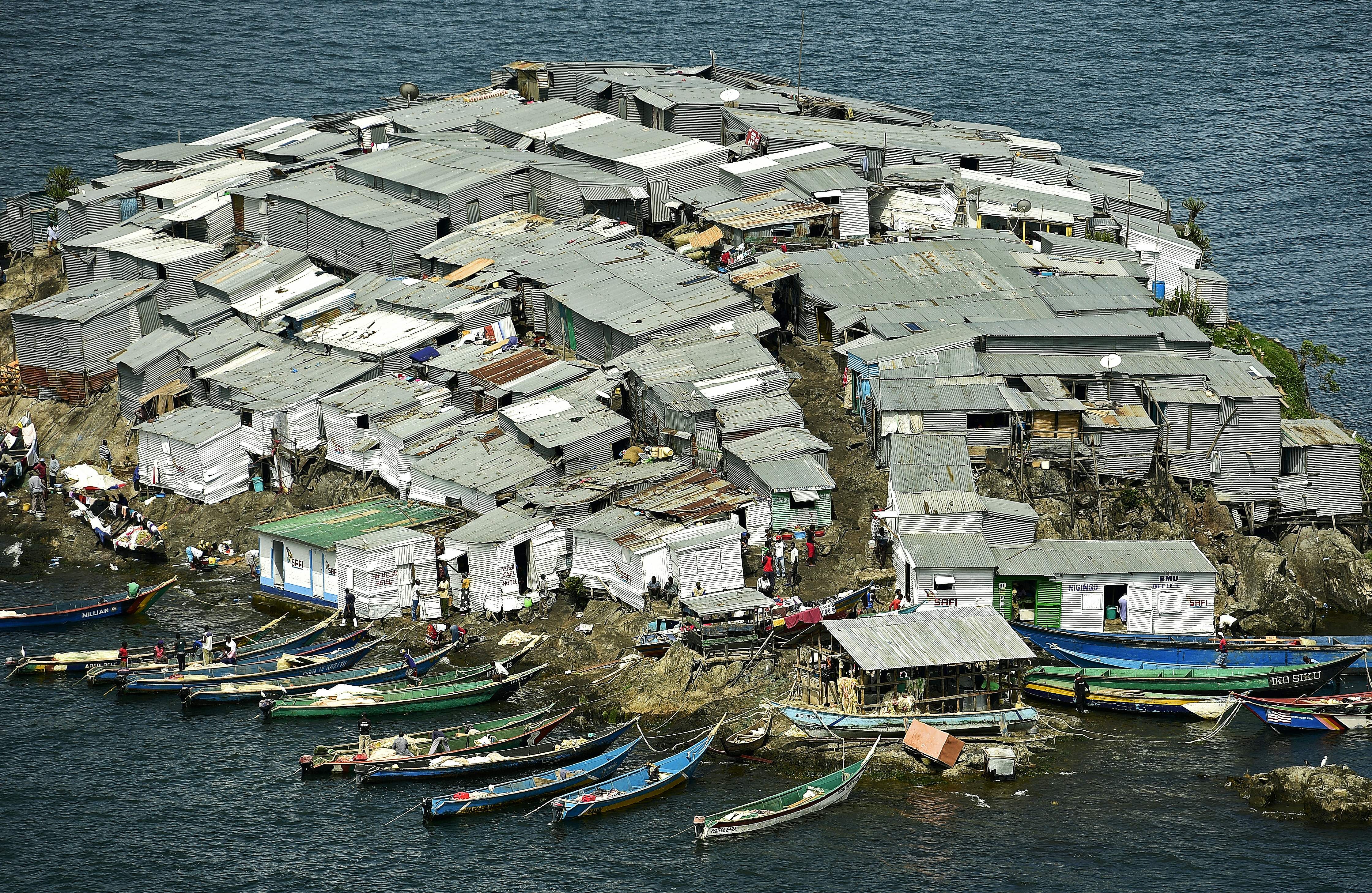
In 2021 arch-Brexiteer Jacob Rees-Mogg, then Leader of the House of Commons, invited justifiable ridicule when in the aftermath of the Brexit withdrawal agreement he declared that fish in the North Sea were “happier” because they were “now British”. The speaker of the House, Sir Lindsay Hoyle, intervened to say that “obviously there is no overwhelming evidence for that”.
Yet, despite widespread dismissal of Rees-Mogg’s deliberately jingoistic line, there are fishermen on the tiny island of Migingo who share his sentiments. As do their competing governments. Fish, it seems, might have a nationality.
However serious or otherwise Rees-Mogg may have been, the nationality of fish – or their possible lack of it – is just one of the bones of contention in the seemingly endless spat over the world’s smallest disputed island.
Migingo, in the eastern waters of Lake Victoria, may be tiny but it is at the centre of a decades-long territorial dispute between the governments of Kenya and Uganda. Migingo was once the proverbial pinprick on the map, a speck in the ocean, of little concern to anyone. “Nothing more than a rock jutting out of the water,” according to Emmanuel Kisiangani, a senior researcher at the Pretoria office of the Institute for Security Studies.
Then, around the turn of the current century, a handful of fishermen hoping to catch Nile perch – or mbuta – decided that instead of travelling out from the edges of the lake every day, they could stop over on Migingo, then occupied by only birds and snakes. As their catches grew, they were quickly joined by others mainly from Kenya, but also from Uganda, Tanzania, Somalia, Ethiopia and the Democratic Republic of Congo.
Once only popular with locals, mbuta’s reputation has spread and it’s now found on the dining tables of plush European and American restaurants. Catching it has become lucrative, especially since the lake’s waters have been receding. Its shores have been overfished and have become clogged with rapidly growing water hyacinths. The fishing grounds in the deeper waters surrounding Migingo are now even more profitable.
The island – smaller than a football pitch and at its highest only 15m above the water level – was soon covered in shacks which house hundreds and make it one of the most densely populated spots on the planet. In addition to fishermen, smugglers and pirates arrived, exploiting the suddenly booming population. Fours bars, gambling dens and a brothel are said to be among the businesses operating on Migingo, as is a pre-school creche and a pharmacy.
Wafula Okumu, executive director of The Borders Institute in Nairobi, who formerly worked for the African Union as chief adviser on border disputes, says: “The island’s population is actually not permanent but transient varying from day to day, but averages about 1,000. During daytime fishermen are more prominent but overnight it tends to morph into a smuggling hub.”
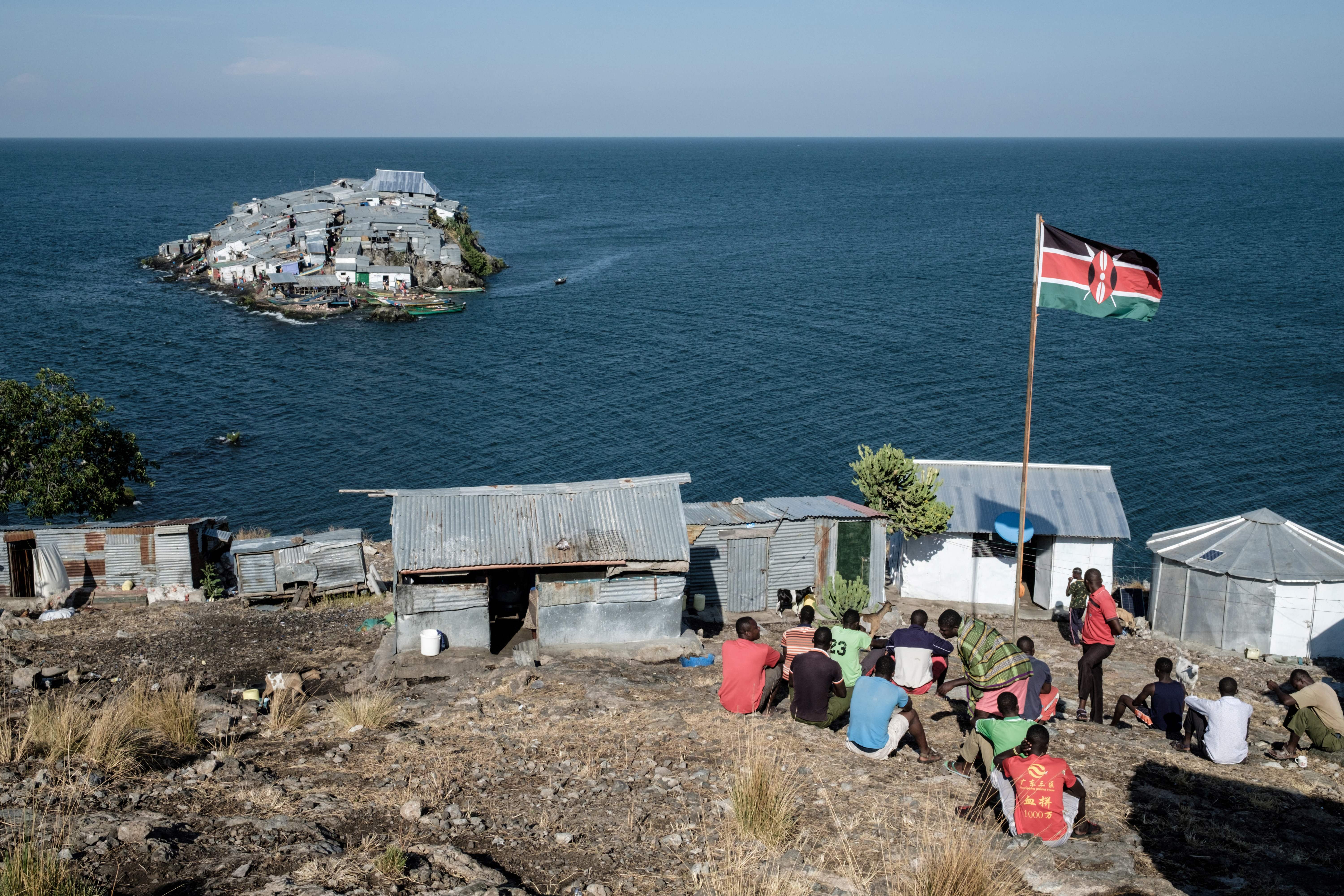
But beyond the rapidly increasing difficulties of policing what was becoming a lawless island state, governments were starting to pay attention to Migingo. They had realised how profitable mbuta fishing rights were. But because the island fell almost exactly on the border between Kenya and Uganda which runs north-south down Lake Victoria, both nations suddenly found themselves locked in acrimony. Both claimed it as their own.
From his corrugated metal shack on the western tip of the island, boat owner David Kipkemei says: “Every so often the police show up but the people who live here just sit in the middle carrying on with their lives.” Around the lake shores though, political rancour prevails.
Since 1926 official maps have shown that the island is 510m east of the border, putting it firmly in Kenyan waters. But Lake Victoria is, of course, the colonial era moniker for the inland sea which has many other names in local languages and dialects. And it may be that poor or thoughtless map drawing by the colonial powers in Africa has contributed to the dispute.
As the European powers began to leave the continent, the lines they had drawn on their maps often failed to take into account ethnicity, regional politics or the historical claims of local inhabitants. Newly independent nations were, in effect, left with the borders created by the departing colonial powers, however arbitrary these may have been.
While the Uganda government maintains that historical records are not clear, Kenya’s position is the opposite. The Kenyans have even threatened military force to occupy the island
Not only that, but sometimes the lines had been drawn very quickly. Cartography in the days of what became known as “the scramble for Africa” (or more truthfully, the scramble for Africa’s resources) was somewhat capricious and unaccomplished. Migingo is perhaps the diminutive version of a much bigger problem that has frequently led to violent encounters. Burundi and Rwanda, Sudan and South Sudan, Eritrea and Ethiopia are just a few of the hostile conflicts caused, at least in part, by colonial territorial legacies.
Uganda has argued, with possible justification, that the British who drew the border line specifically to ensure the Lake Victoria to Mombasa railway remained wholly within Kenya for administrative simplicity, made errors when naming Migingo and two other islands close by. It argues that the description of what is known today as Pyramid Island (because of its shape) better fits the island of Ugingo which actually looks like a pyramid. If Ugingo really is the “Pyramid Island” mentioned on the old colonial maps – rather than what today is considered Pyramid Island – then Migingo is actually in Ugandan waters, by just a few metres. In addition, Uganda insists it is in possession of other colonial maps putting Migingo on its side of the border although these have yet to be validated.
Okumu, who also worked on the recent border agreement between Sudan and South Sudan, says that “while the Uganda government maintains that historical records are not clear, Kenya’s position is the opposite. The Kenyans have even threatened military force to occupy the island.” But contradiction and obfuscation seems to be the perpetual backdrop to the dispute. Backtracking on the military threat, former Kenyan president Uhuru Kenyatta suggested involving the International Court of Justice (ICJ) so confident was he of Kenya’s position. “And interestingly, Ugandan President Yoweri Museveni made a statement that Migingo does belong to Kenya, but the water surrounding it belongs to Uganda,” says Okumu. One might conclude the sparring parties are deliberately creating confusion.
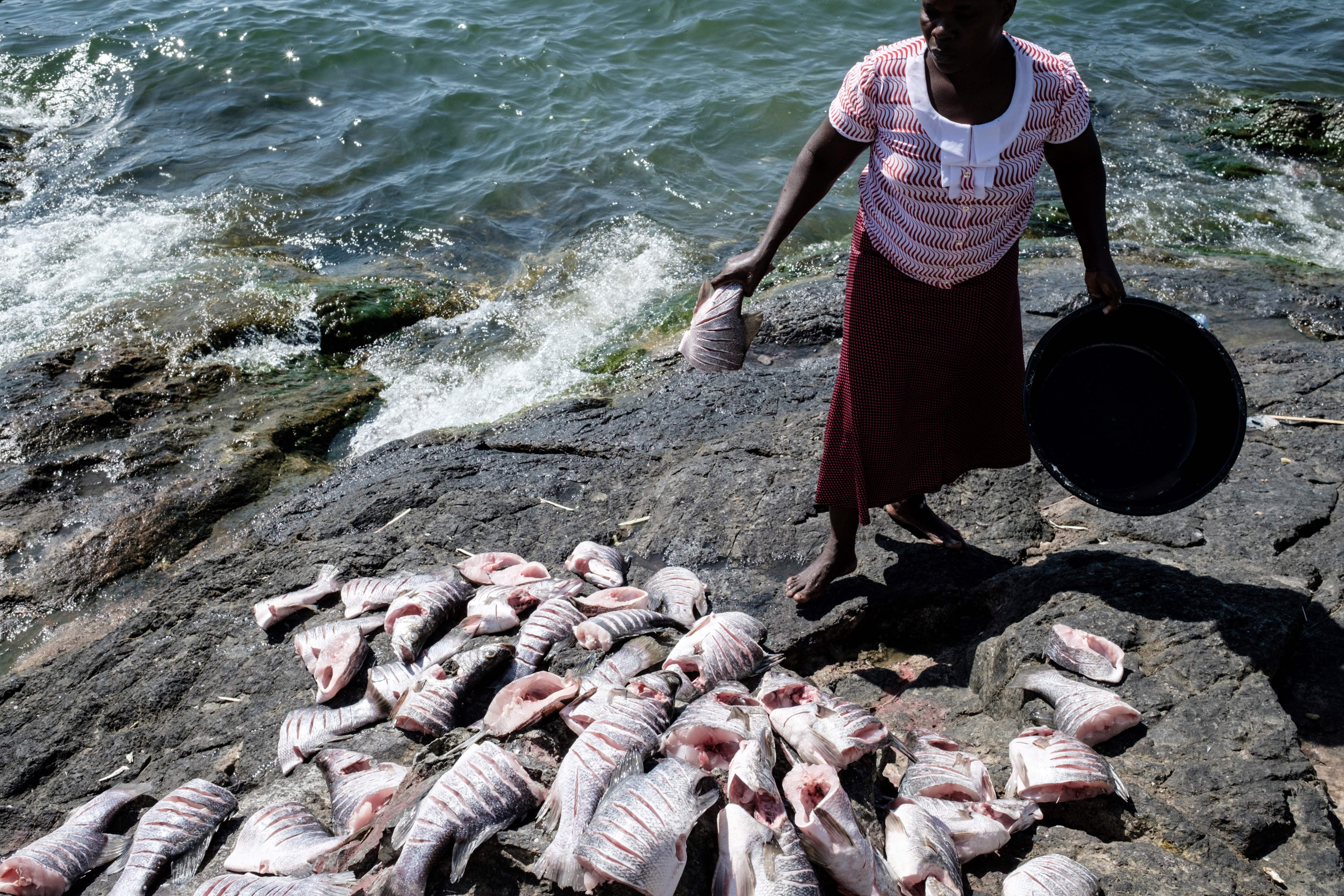
The dispute kicked off in earnest in 2004 when Uganda sent armed police to Migingo ostensibly to protect its fishermen from pirates but also to collect taxes for fishing rights. Kenyans sharing the island objected. Uganda raised the stakes by accusing Kenyan fishermen of crossing the border into Ugandan waters to catch fish. The Kenyans responded by saying they had traditionally fished there with no impediment. When Kenya sent marines to confront the Ugandan police the battle lines were drawn.
Among the many points of discord arising from the dispute, it has been argued – as Rees-Mogg would surely concur – that fish do indeed have a nationality. And since 2009 the Kenyans have contended that this is based on where they spawned. Because, although the Kenyan fishermen on Migingo do indeed enter Ugandan waters to catch their mbuta, it seems the fish – which can grow to 2m long – migrate there from their hatching grounds off the Kenyan shore of the lake. Only 6 per cent of Lake Victoria is Kenyan territory, 43 per cent is Ugandan (the rest is Tanzanian), but it is, according to the Kenyan argument, an advantageous 6 per cent. “It was a cheeky response from the Kenyans,” says Okuwu. But it is not one, thus far, that is upheld by international law.
And, it seems, there is more to the dispute than simply fish, however important commercially mbuta may be. In 2006 oil deposits were found that could very probably straddle the border. The two governments may – to pun dreadfully – have bigger fish to fry.
The dispute is more than a contest of fishermen, according to Okumu adding that while the dispute’s narratives have included fishing rights, taxation, the threat of piracy and oil exploitation, the island is clearly a smuggling hub. Both sides have accused the other of benefiting from the situation – although both governments deny this.
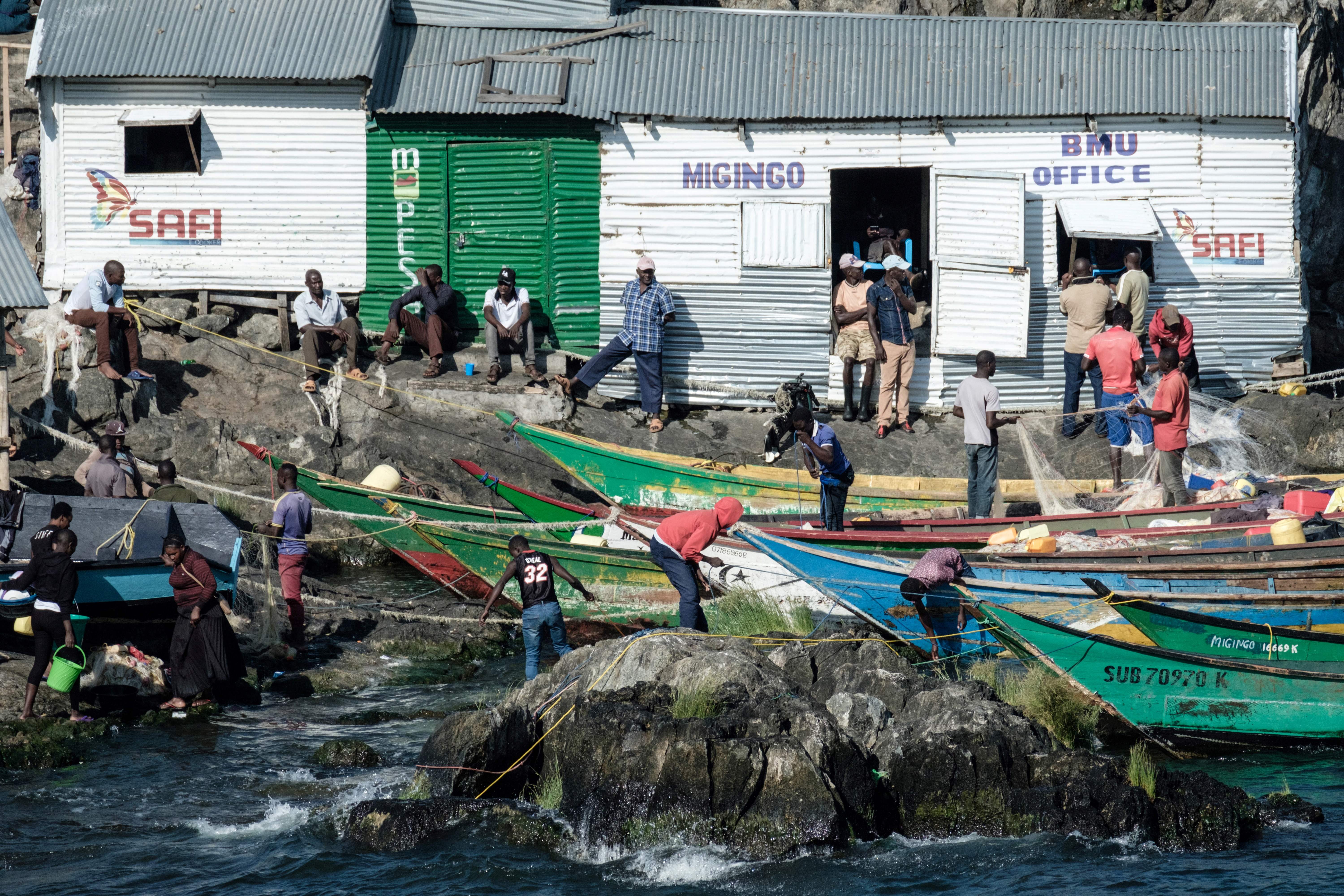
So will there be a lasting settlement? Well, supposedly this has already occurred. In 2009 government ministers from both countries met in the Ugandan capital Kampala to resolve the affair, taking as their starting point the “Kenya Colony and Protectorate Order in Council, 1926” drawn up by the British. In the 1920s, Kenya was a British colony and Uganda was a British protectorate meaning that both were bound by the agreement although local populations had little say in its implementation.
“The 1926 order clearly defined where the island lies. Both governments know where the boundary is. This is a dispute that should not exist,” says Okumu. He believes the dispute, however, has little to do with the old colonial delineation, suggesting that the two nations are simply trying to exploit the situation to further their own ends.
Initially, the Kampala meeting proceeded smoothly with Uganda accepting the island was in Kenyan territory but that both nations’ fishermen could live there and both could fish in the surrounding waters. But when representatives travelled to the island to address its residents, acrimony flared. As a consequence, Ugandan deputy prime minister Eriya Kategaya refused to withdraw Ugandan police patrols from the island which had been part of the agreement, and Kenya redeployed its own police to Migingo.
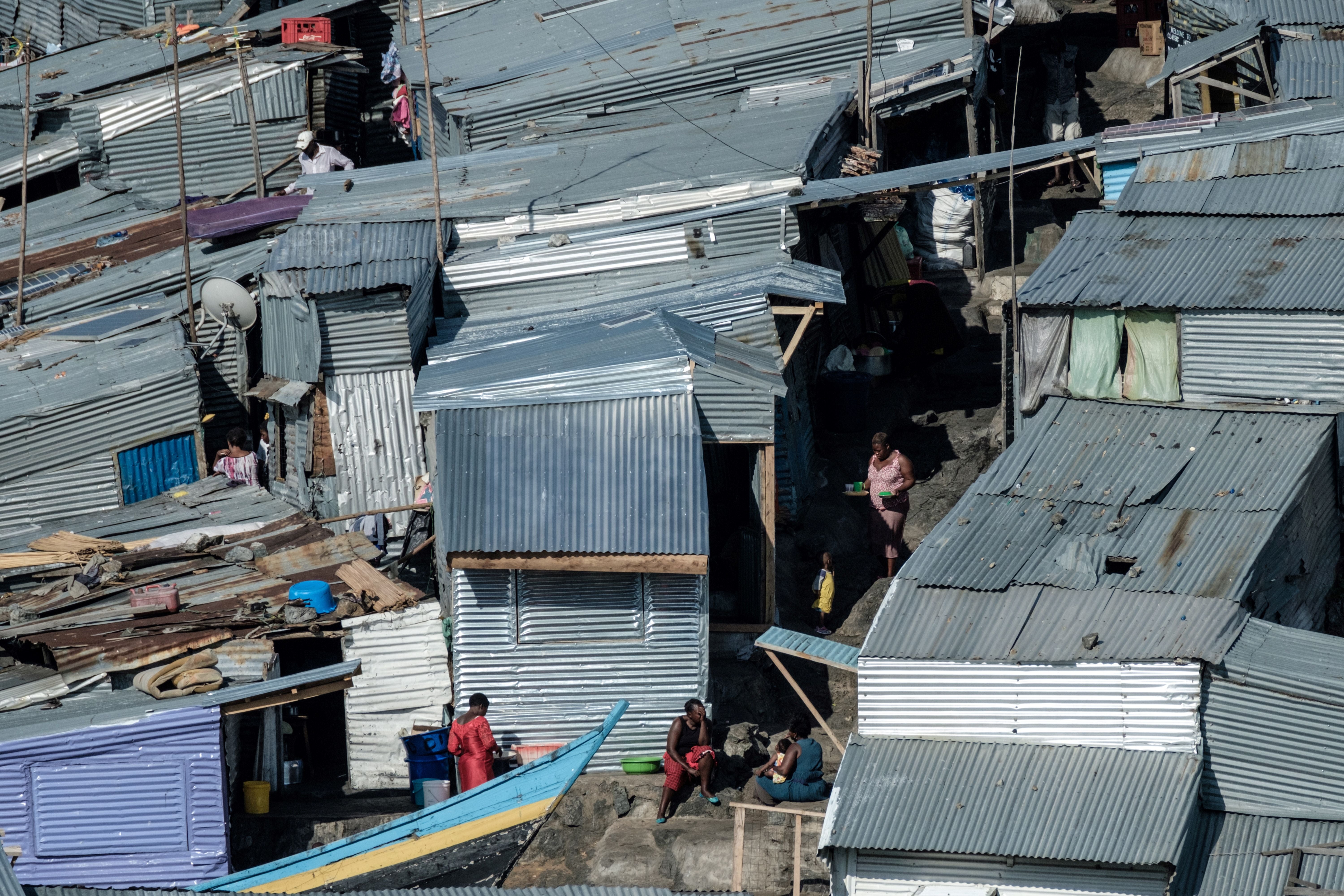
It would be seven years before a further attempt was made to resolve the impasse. In 2016, a joint technical committee once again set about determining the actual border and who could cross it. It was agreed that security forces from both countries could patrol the island and the border running down the lake. But Uganda objected to the subsequent raising of the Kenyan flag on the island saying the land should remain neutral. Ugandan officials also disrupted preparations to give Kenyans on Migingo a vote in their 2017 general election.
“The joint technical team stopped working,” says Okumu. “The exercise lacked both legal and institutional frameworks as well as political will in both capitals. Again there were tiresome disputes over the interpretation of maps.” Once more Okumu raises the subject of corruption, again denied by both governments.
In a further attempt at diplomacy in 2019 Kenya agreed to share the island with Uganda if fishing rights could be granted to Kenyan fishermen while simultaneously insisting the island remained Kenyan territory. A memorandum of understanding between the two governments was signed that year but still, the velitation rumbles on. “The memorandum has yet to be implemented,” says Okuwu. He hopes the East African Community – the intergovernmental organisation of countries in the Great Lakes region – might be able to bring about a resolution but it has yet to pronounce on the dispute. “Lake Victoria is like an umbilical cord tying together the countries on its shores like conjoined twins. They all want the same thing,” he says.
So the stalemate continues. Questions over Pyramid Island notwithstanding, Migingo is deemed by the international community to be in Kenyan waters, but Uganda has restated its assertion that, even if this is so, Kenyans still cannot cross the border to fish in Ugandan waters.
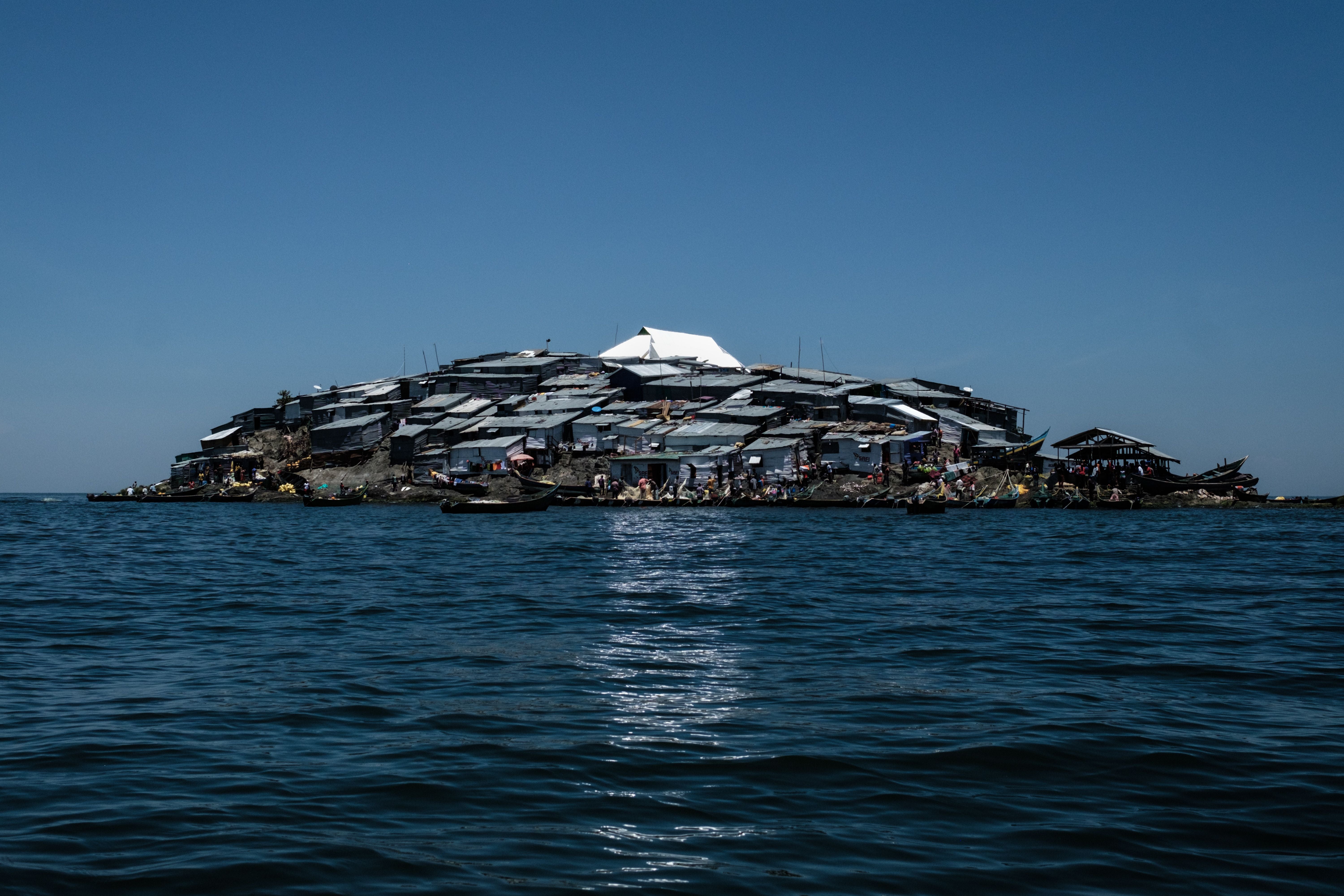
So will a solution ever be found? “Never say never,” says Martin Pratt director of Bordermap Consulting, a Canadian company working to resolve territorial disputes. “Ideally such disputes should be settled through negotiation between the two parties but if no agreement can be reached mediation by a respected third party, or the establishment of a conciliation commission, may be required. But this generally only works when both parties are willing to consider a compromise.
“Unfortunately, compromise is not always achievable when dealing with something as important as territorial sovereignty. Many states have preferred to take their chances and submit their claims to the International Court of Justice or a special arbitral tribunal for legally binding adjudication. Of course, both sides have to accept the subsequent ruling which they might not choose to do. But again, never say never.”
Back on Migingo, David Kipkemei says “it would be good if somebody could decide who owns the damn place, then maybe we can have some peace. Right now it’s Africa’s smallest war.” And Okumu reiterates: “This dispute is very easy to resolve if there is a willingness in the capitals of the two historically close neighbours.” Sadly, right now, that seems not to be the case.
Meanwhile, fish stocks are dwindling and, as a consequence, prices are rising. With mbuta now fetching as much as $5/kilo wholesale –up from 50 cents four years ago – it seems likely the fishermen won’t be going elsewhere any time soon. But nor, it seems, will their politicians.




Join our commenting forum
Join thought-provoking conversations, follow other Independent readers and see their replies
Comments